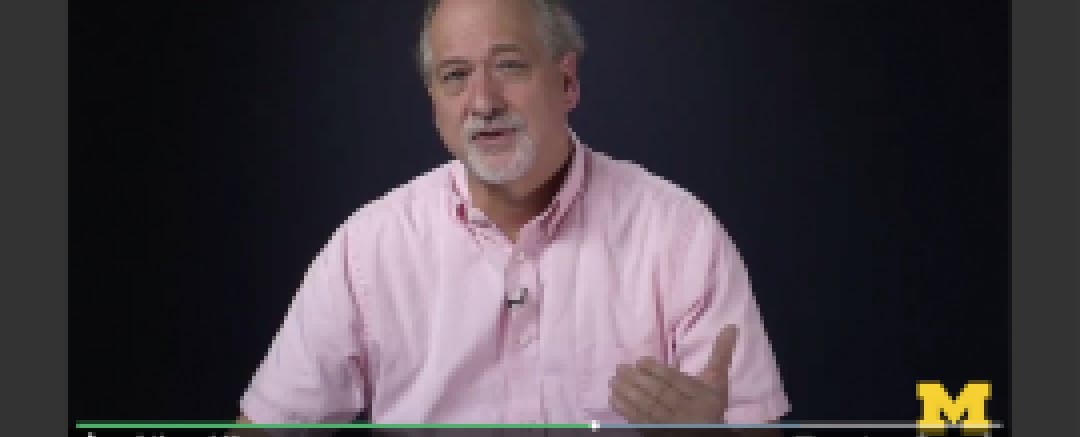There isn’t a New York Times bestseller list for online courses, but perhaps there should be. After all, so-called MOOCs, or massive open online courses, were meant to open education to as many learners as possible, and in many ways they are more like books (digital ones, packed with videos and interactive quizzes) than courses.
The colleges and companies offering MOOCs can be pretty guarded these days about releasing specific numbers on how many people enroll or pay for a “verified certificate” or microcredential showing they took the course. But both Coursera and EdX, two of the largest providers, do release lists of their most popular courses. And those lists offer a telling snapshot of how MOOCs are evolving and what their impact is on the instructors and institutions offering them.
Here are the top 10 most popular courses for each provider:
Coursera Top 10 Most Popular Courses (over past 12 months)

edX Top 10 Most Popular Courses (all time)

Like bestsellers, some of these courses are bringing in serious money. When hundreds of thousands of people sign up for a course and tens of thousands of those pay a fee for a certificate, that adds up. That means some blockbuster MOOCs are returning serious revenue to the colleges or organizations offering them.
Both edX and Coursera typically split revenue 50-50 with their partners, and it’s up to each college or organization to decide how their cut is shared. One MOOC in Coursera’s top 10 list has had nearly 500,000 active learners and 46,000 payments, according to a document obtained by EdSurge. That means it brought in more than $2.5 million, split between the course provider and the company. For some of the colleges and universities offering the courses, and the professors making them, this has provided a new form of support to try other innovations in teaching—online and on campus.
Coding And Self-Help Courses Dominate
Most of the top MOOCs (13 of the 20 courses) involve teaching computer science or some kind of coding. (We’re counting the crypto-currency tech course.) Both edX and Coursera have top courses on teaching Python, one of the most widely-used programming languages. These courses also take advantage of the online medium more fully than courses on other subjects, since many allow students to upload coding projects that are then automatically graded. In other words, students aren’t just passively watching videos—they’re doing projects, and they get instant feedback from the software.
In some ways a key question for MOOCs, even after all these years, is: Can other subjects be delivered online as well as computer science?
Self-help courses might be one viable competitor.
Other than coding, MOOCs that promise to help students better understand themselves are among the most popular. They’re essentially self-help courses grounded in some serious body of knowledge, and their topics are similar to self-help books that dominate print best-seller lists.
Do you have a favorite MOOC? Tell us what it is for our upcoming reader top 10 MOOC list.
One of the newest blockbuster MOOCs is The Science of Well-Being, offered by a Yale University professor. The University of California at Berkeley has drawn record numbers of students with a similar course on The Science of Happiness. And the University of Queensland made the top 10 on edX with a course on The Science of Everyday Thinking. All of them offer advice for how to find fulfillment or think more clearly (and all promise to apply science to an everyday concern).
Laurie Santos, a professor of psychology and cognitive science at Yale, teaches the Science of Well-Being as both an on-campus course and as a MOOC. She came up with the idea after serving as a faculty adviser to one of the residential colleges on campus, which involves living in an apartment within a dormitory. “I just realized that the students were a lot more overwhelmed and depressed than a lot of faculty realized,” she said in an interview with EdSurge. “The science of psychology has a lot to say to people about how to live.”

The on-campus version of the course turned out to be the most popular ever taught at Yale, attracting 1,200 students. Some 100,000 signed up for the MOOC version.
Santos filmed many of the videos from a comfy chair in her apartment, and the university also created a free smartphone app to go with the class, called ReWi, to help students track their habits to better notice patterns in their own behavior.
“The hope is this isn’t going to be an ordinary class or lecture series for you,” Santos tells students in an introductory video within the MOOC. “This is the kind of thing that we hope can change your life in a real way—not just by teaching you new content and new information but by really changing your habits.” In that way, the free, online version is a new kind of outreach by a university, an exercise in disseminating research findings in an interactive way.
Colleges Differ on How to Distribute Revenue
At the University of Michigan, officials typically give a third of any revenue from its MOOCs to the central administration, a third to the department offering the course, and a third to the professors teaching it.
“The interesting effect of this is that people who are not research superstars can travel and go to conferences,” says Charles Severance, who teaches a blockbuster MOOC about Python offered through Coursera. He says that’s the case even when the MOOC is not in the top ten, adding that a colleague in his department who is a lecturer (meaning she’s not a tenure-track professor) has been able to become a “player” in national conversations because MOOC revenue lets her travel to conferences.
Severance, who is a clinical associate professor of information in the School of Information at Michigan, used some of the money he’s received from the online course to start an edtech company. He has also donated to a charity that supports children with disabilities. He says that the way Michigan has structured the revenue has created an incentive for innovation. “Once you have a blockbuster at a university, then faculty rush to MOOCs,” he said.
The framework Michigan set up is based on the university’s rules for patents on inventions made by professors, according to James DeVaney, associate vice provost for academic innovation at the University of Michigan. Schools within the university that produce well-performing MOOCs, he says, will sometimes put the revenue into an “academic innovation fund” to improve teaching throughout the department. And he says the money from MOOCs going to the university has been reinvested in teaching as well, with some of it used to start a new portal called Michigan Online, which provides a one-stop directory of all online course offerings from Michigan, and gives University of Michigan students free access to MOOCs and microcredentials offered by Michigan.

Many of the colleges are reluctant to talk about MOOC revenue, and stress that the efforts are not about money. “We really do this from a place of how can we share Yale’s great expertise with the world,” says Belinda Platt, assistant director of digital education at Yale. “We will try to recoup our costs for production,” she says. “Any additional revenue or profits go back to the professor.” Platt says that some professors have waived their royalties so the money can go back into their research.
Not All Blockbusters Bring in Bucks
Just because a course draws tens of thousands of students doesn’t mean it brings in money, though. In coding courses, students have an incentive to pay for a certificate, which they can add to their resume or LinkedIn profile to help get a job or promotion. Self-help courses lack that driver.
For the University of Queensland’s Science of Everyday Thinking course, for instance, fewer than 1 percent of those who enroll pay for a certificate, according to Matthew Thompson, one of the course’s instructors who is now a lecturer at Murdoch University. He says about 20,000 people signed up for the most recent run of the course, and about 40,000 in the past calendar year, which would bring a haul of only a couple hundred dollars. He says any revenue the university gets goes toward the cost of hiring course moderators.
Top-Tier Colleges Aren’t the Only Innovators
The marketing campaigns for Coursera and edX tout how famous and selective their partner colleges are, and many of the universities offering the most popular MOOCs are also the ones who top the U.S. News college rankings. But some of the most creative teaching delivery comes from non-Ivy-league partners.
For instance, Barbara Oakley, an engineering professor at Oakland University in Rochester, Michigan, put together the MOOC she co-teaches on the relatively cheap (a few thousand dollars), by Googling what equipment to buy and rigging a studio in her basement. Her course has drawn more than two million students, and a New York Times article called its popularity in part “a testament to her skill at presenting the material.”
In an interview, she jokes that she’s “not a top-tier university person,” but that she thinks many of the best instructors today are at institutions like hers. “There is so much untapped potential of great, great teaching, and I really hope that the top-tier universities don’t just ride on the prestige of their most illustrious researchers,” she says. She adds that many administrators at what she calls “second-tier universities” fear MOOCs, but Oakley says they should embrace them and show off their teaching talent. “They’re not letting their teachers shine,” she argues.
And some of the most popular courses, and ones bringing in the most revenue, are made not by college partners but by companies. Perhaps the most popular MOOC professor is Andrew Ng, co-founder of Coursera who also runs another company called Deeplearning.ai, which teaches a series of MOOCs delivered on Coursera, several of which made Coursera's top 10.

A New Kind of Instructor
Once the videos for a MOOC have been recorded and the interactive quizzes built, universities can run the online courses again, again and again. And they do. But the big-name professors seen in the videos often have little to do with course reruns. Instead, colleges and universities hire instructors to keep things going. It’s a new kind of teaching role, serving as a mix of student guide and project manager.
Ana Bell is one of those instructors. As a lecturer in the Electrical Engineering and Computer Science department at the Massachusetts Institute of Technology, and a fellow in MIT’s Digital Learning Lab, part of her time is spent teaching an in-person course at MIT on Python and introductory computer science. And part of her time is overseeing the MOOC version, which is the most popular course of all time on edX.
Even though Bell is not pictured in the lectures, she regularly helps improve the quizzes, the “grading engine” and keeping an eye on the discussion forums and occasionally weighin in. She helped create new slides for some parts of the course when the university recently reshot the MOOC lectures after a new version of Python was released, for example. “Now it’s just a matter of improving the course,” she says.
Instructors like Bell don’t receive a revenue share for helping revamp MOOCs; she is paid as a regular instructor. But Bell says the work gives her a new perspective on where students need help, which makes her a better teacher online and off. “There’s this sort of feedback loop between the two [MOOC and in-person versions of the course], which helps me help students figure out their problems,” says Bell. “I don’t know that I would want to do the MOOC thing as my primary job, but as a secondary thing it’s very satisfying.”
Sanjay Sarma, vice president for open learning at the university, says there are now between 10 to 15 Digital Learning Lab fellows who play similar roles in MIT’s MOOCs. “These folks can be post-doctoral researchers, they can be lecturers,” he says. “But they’ve become very essential.”
Entertainment Over Education—Or Vice Versa
One of the courses topping the MOOC charts, The Science of Everyday Thinking, has a unit on the science of learning. And the professors teaching the course struggled with how much they could practice what they preach when it came to organizing an effective course. Because research shows that courses have to be hard to be effective, learners have to struggle to put concepts together. Often, if things feel easy to a student, the subject matter may not be sinking in.
“If we did this ‘right,’ we would make our content very difficult for students to organize so that they have to put effort into processing it themselves. But that comes at a cost,” says Thompson, of Murdoch University, who helped create the MOOC with another professor while at the University of Queensland.

“It’s not like a university course where they have to be there in order to get certified,” he says “People are doing this on their own time! They’re actually sitting back and watching this almost as entertainment.” The goal was to keep the MOOC interesting enough to hold the interest of casual learners without making it so challenging that people would drop out.
To balance that, the university hired a producer with a journalism background to help shape the video lectures, and they hired an outside company to keep the production value high. They even interviewed the hosts of the popular TV show MythBusters in one section of the course to get the audience’s attention.
So what are these blockbuster MOOCs, then? Experiential textbooks? Gateways to more rigorous college courses? A new kind of entertainment program?
Maybe the answer is: all of the above.


